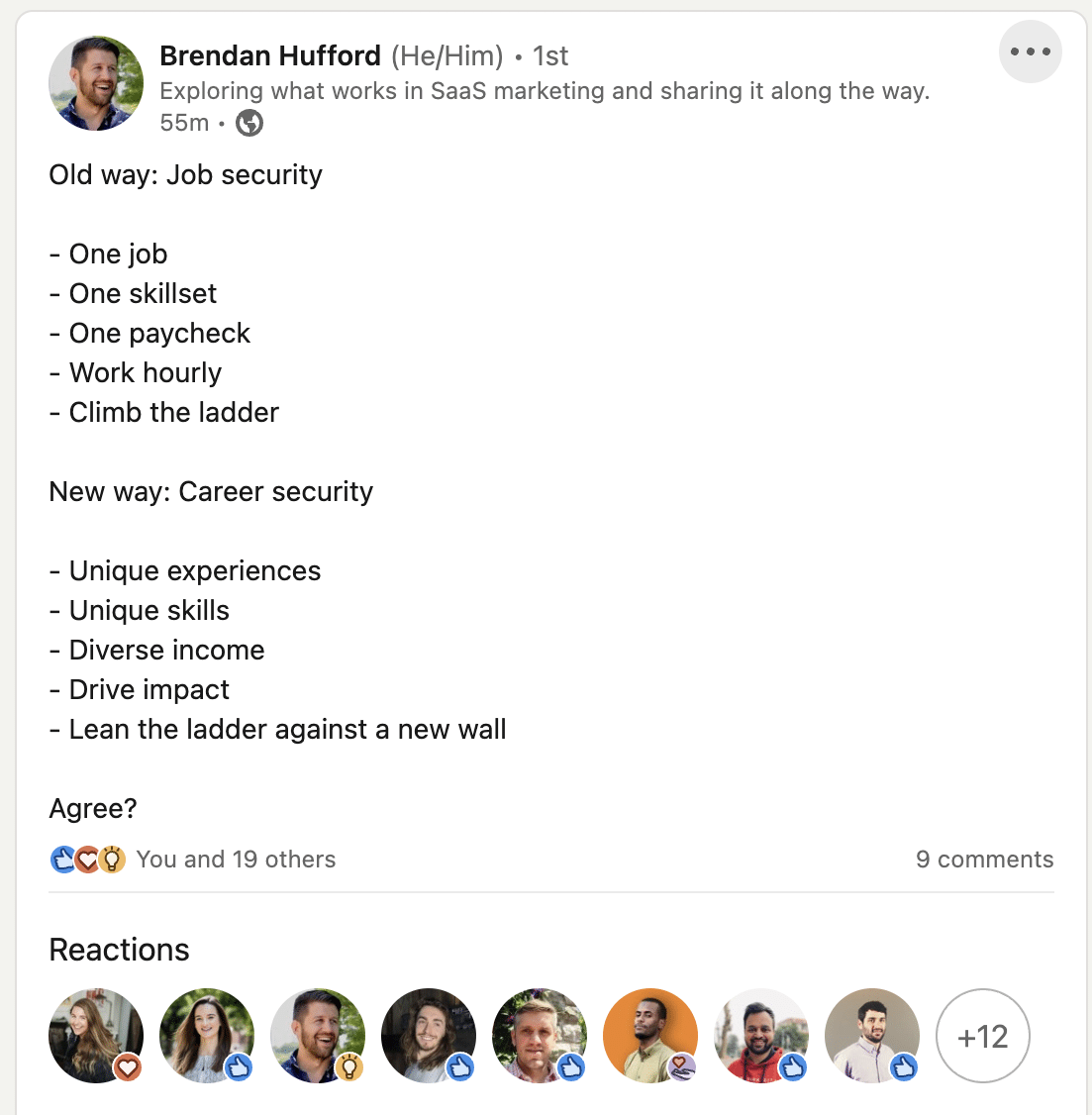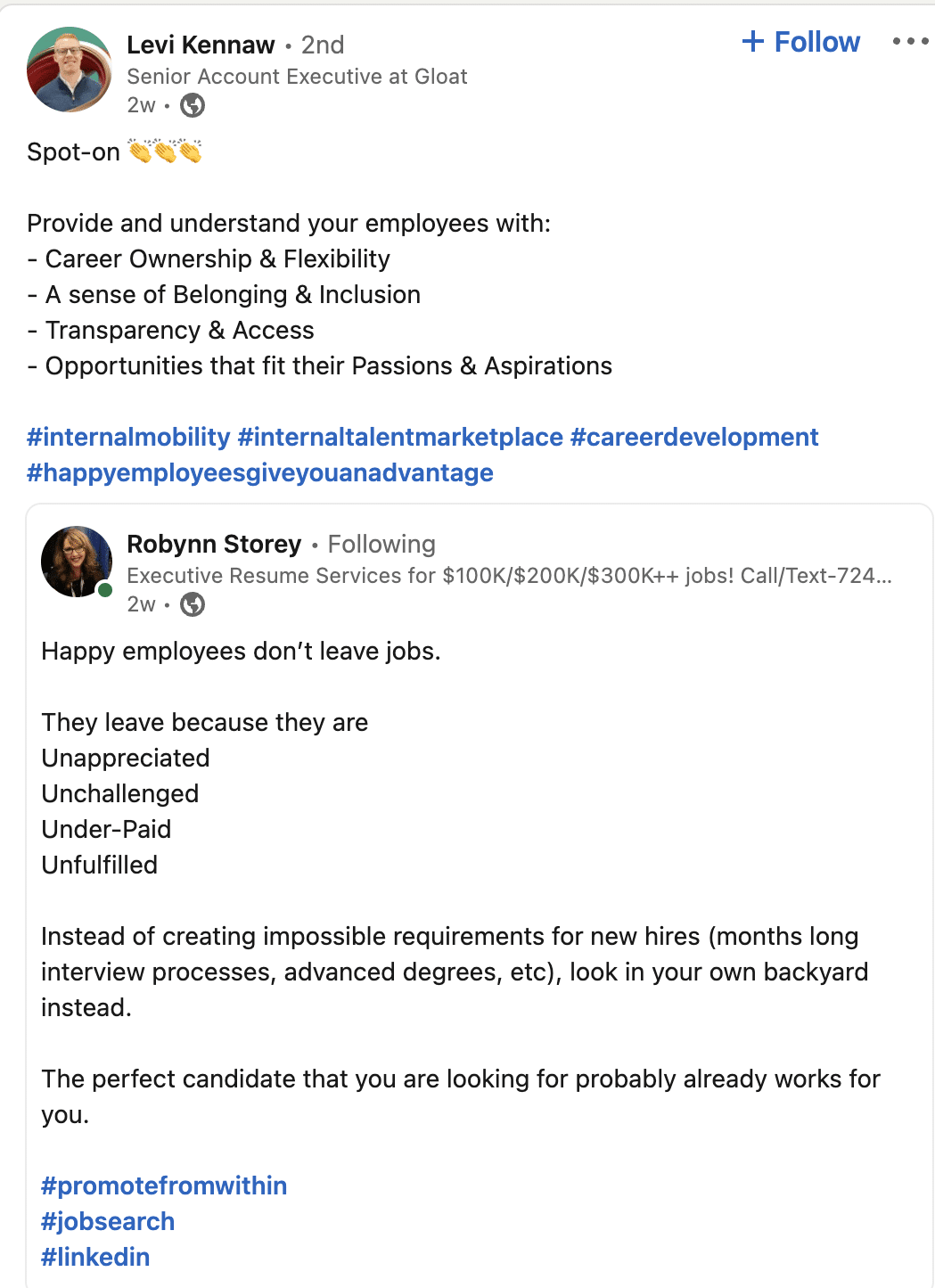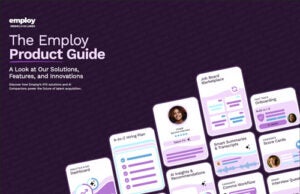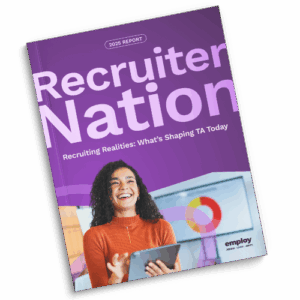Career agility refers to one’s ability to keep pace with the demands of the modern business landscape.
Employees who are agile in both mindset and skills are considered to have a greater ability in adapting to new roles, changing work environments, and business demands.
Professionals who excel at career agility can more easily or fluidly move into new positions at their companies where their skills translate from one role to another.
Let’s talk about career agility
You’ve heard of talent management, internal mobility, and talent mobility — but what about career agility?
Over the course of the past three years, both recruiters and employees alike have experienced everything from The Great Resignation to The Great Regret, The Great Rehire, and a lot of other ironically not so great changes in the world of talent acquisition.
For hiring pros, these changes have meant making mass pivots in the way you source, nurture, recruit, and ultimately hire people into open roles.
You’re competing for top talent, consistently adapting your approach to recruiting, and even restructuring salaries, benefits, and perks programs entirely.
But for employees, the shift to a candidate market has meant rethinking how we can leverage our skills, expertise, and experiences to obtain roles where we grow.
Enter career agility.
Thanks to career agility, more workers are focusing on nurturing the skills that allow them to adapt to a number of different roles. We’re leaning into being jacks of all trades as opposed to masters of one or two. Finally, being a jack of all trades is a good thing!
But what exactly is career agility, and why should your company be hiring for it?
What is career agility?
In a nutshell, career agility refers to one’s ability to keep pace with the demands of the modern business landscape.
Employees who are agile in both mindset and skills are considered to have a greater ability in adapting to new roles, changing work environments, and business demands.
Employees who excel at career agility can more easily or fluidly move into new positions where their skills translate from one role to another.
For example, a content marketer can foster skills that allow them to transition to a demand generation or even sales role (i.e., a completely other team at their business).
Why is it important for employees to be career agile?
An agile career is one in which you can respond to and ultimately succeed in changing business landscapes, evolving roles, and industry demands.
When an employee is career agile, it means they can:
- Translate existing skills into multiple roles
- Move effectively from one to another (even within the same organization)
- Adapt to changes in business and industry landscapes
- Thrive in unique situations where individuals and interactions matter just as much as processes and tools
To put it simply, being career agile means you’re able to respond better to changes in your career as you have skill security that enables you to move for fluidly between related roles.

Why does career agility matter for employers?
Being career agile doesn’t just benefit employees, but companies as well. Think about it this way: when you have more career agile employees, it enables your organization to:
- Hire from within
- Leverage internal mobility to promote employees
- Move employees up into senior roles
- Develop and grow existing employees
On the flip side, employees who know they have opportunities to develop, grow, and ultimately be promoted within an organization are more likely to remain with their current employer.
All resulting in the retention of talent that you really can’t afford to lose. as LinkedIn has found, employees stay with their company 41% longer when their companies hire from within.
Why you should hire for career agility
Aside from employee retention, there is a slew of benefits to hiring for career agility that can help transform the way you recruit and how you manage talent.
Let’s take a look at three reasons why hiring for career agility can benefit your organization beyond retention.
1) Hire like-minded people who thrive in collaborative environments
When you hire for career agility, you inherently source candidates whose skills allow them to move between roles and responsibilities, but these agile workers also tend to thrive in collaborative work environments where unique perspectives, differing opinions, and new ideas converge to move you company forward.
2) Improve engagement across your teams and departments
An agile organization focuses on more than just tools, processes, and strategy—it also prioritizes individuals, interactions, feedback, and collaboration.
As we mentioned above, agile employees tend to thrive in environments where cross-collaboration is encouraged, but career agility directly stipulates that employees have the opportunity to work with other teams, gather experiences from outside of their own roles, and collaborate to learn new ways of doing things — including other roles.
This inevitably improves engagement as employees become more invested in their work, are given opportunities to grow, and can explore potential new roles within the same org.
3) Become adaptive as opposed to reactive
To get to a point where your teams are adaptive versus reactive, people and hiring managers must plan ahead for change, pivoting rather than relying on the way things are “always done” and understanding that hiring for open roles or new positions means looking inward at existing talent just as much as it can require sourcing candidates externally.
This means ditching stale hiring and management processes, and instead focusing on how existing employees with varied skill sets and experiences can be leveraged cross-functionally — and how their skill development should be supported not just by HR but by managers and leaders they directly and indirectly report to.
For example, an existing employee in Marketing could mentor with a leader in Sales; a junior IT professional could join a project on the Development team, or a recruiting intern could contribute to an annual HR report run by the People and Culture team.
4) Nurture better relationships between employees and leaders
You know the adage, “People don’t leave companies, they leave leaders”?
Well, there’s something to be said for a supportive work environment where employees don’t need to jump ship to upskill, reskill, and grow — both personally and professionally.
Often, career agility boils down to having the opportunity to nurture the skills that allow you, as an employee, to be more agile.
And this happens when leaders have the transparent, communicative relationships they need to have with their reports where employees are given access to development and skill-building possibilities.
Hiring for career agility — and future potential — helps nurture those relationships. Not to mention, it helps retain the talent you work hard to recruit, too.

4 ways to prepare your recruiting team to hire for career agility
As your hiring team continues to recruit during challenging times, and builds out processes for future-proofing recruiting at your company, there are four key things you can do to ensure you’re hiring for career agility.
1) Focus on skill-building when hiring
The traditional approach to recruiting has been focused on hiring for skills first, potential later.
For example, employers will often look at hiring as a way of adding to an inventory of skills rather than considering how a candidate’s skills could be developed and added to as they work through a new role.
In other words, rarely are people hiring for capability and potential.
Given how rapidly your business landscape can change (and will), your hiring team must place more emphasis on recruiting candidates with a desire to upskill and reskill, as opposed to only considering applicants that tick off those proverbial skill boxes.
Consider your job descriptions: do you require candidates to have a rigid set of skills, or are applicants with varied skill sets and a desire to adopt new skills also encouraged to apply?
With more organizations focusing on building the critical skills, core competencies, and reskilling of employees, you can’t afford to hire just for existing skill alone.
2) Emphasize growth and development during recruitment
For many employees today, career trajectories no longer follow a linear, upward climb towards management.
In fact, most of our career aspirations are better described today as being a squiggly line, where learning, development, and skill-building align with our personal goals just as much as our professional ones.
This is where meaningful growth and development opportunities come into play.
When leaders and managers give employees more control over their career progression, workers have more say in the skills the develop, the roles they move into, and the experience they obtain all while remaining with their current employer.
Our own studies on internal mobility and talent agility found employees are so invested in creating a new role that nearly a third (31%) would take a pay cut to change positions, and three in five (61%) would start searching for new jobs if their org didn’t allow them to switch roles.
When recruiting, consider:
- Highlighting L&D initiatives in your job descriptions
- Talking about your upskilling benefits/perks in job interviews
- Dedicating a section of your job posting to internal mobility at your company
3) Prioritize internal mobility
Part of building a career agile workforce is implementing and supporting internal mobility—the movement of employees within an organization.
An internal mobility strategy takes this a few steps further by implementing a process or framework for moving existing employees between roles, vertically and laterally.
In the context of career agility, having a dedicated process, program, or strategy for up leveling employees into new or different roles allows both hiring teams and hiring managers to recruit talent for future potential and mobility — not just today’s urgent business needs.
For example, mentioning your internal mobility program in job postings, promoting it during interviews, and leveraging an internal job board are all strategic ways to help hire agile employees.
Internal mobility is also a cornerstone of career agility. Without an internal mobility process in place, employees may feel limited as to the possibilities of growth and skill development.
(Not to mention, leaders can’t really afford not to prioritize internal mobility.)
Over three in five (61%) employees say they’d search for a new role if their company didn’t allow role changes, while over two-thirds (67%) would leave their organizations altogether if they didn’t allow internal mobility.
4) Include career agility questions in recruiting surveys
An easy, low-lift way of gathering more information from candidates around career agility is to leverage your post-interview/post sourcing surveys.
For example, if you send out EEO or diversity surveys after interviews, consider also including a few questions around career agility and internal mobility.
You can also dedicate time in interviews to Q&A around mobility, or include a brief career agility questionnaire in job applications to gauge a candidate’s interest in upskilling or reskilling.
Here are a few examples of questions you could ask:
- “Tell us about 1-3 skills you’d like to develop if you were to fill this role?”
- “Which skills would you like to obtain by working on our [department title] name?”
- “What role(s) would you like to explore outside of your current one?”
- “On a scale of 1-10, how important are reskilling opportunities to you?”
- “What team would you want to collaborate with? Sales? Dev? Finance?”
- “Have you taken part in an internal mobility process before?”
These Qs can be brief and open-ended or highly targeted as you’d like to make them, but they should require minimal effort on the applicant’s part if you include them in job application processes.
Ready to recruit top talent to future-proof your organization?
In a world where the competition for talent is fierce, leveraging the star employees you already have, and focusing on the future potential of candidates, can help both your recruiting team and org at large adapt to the demands and realities of hiring today.
Our complete guide to internal mobility empowers recruiters with everything they need to know to drive internal mobility. Get your free copy of our guide below.
















